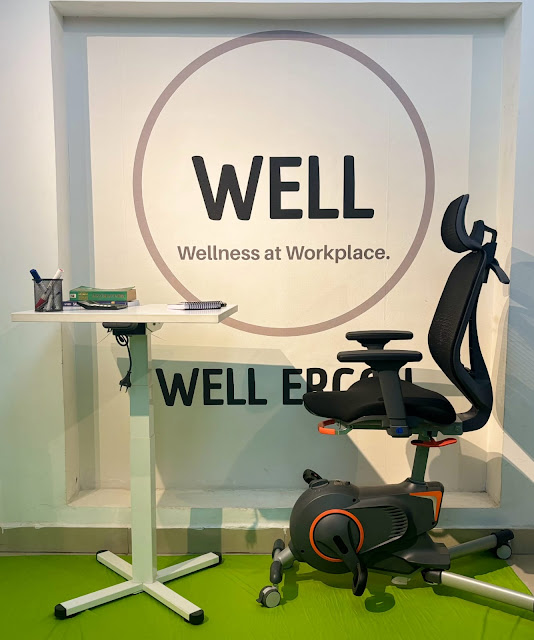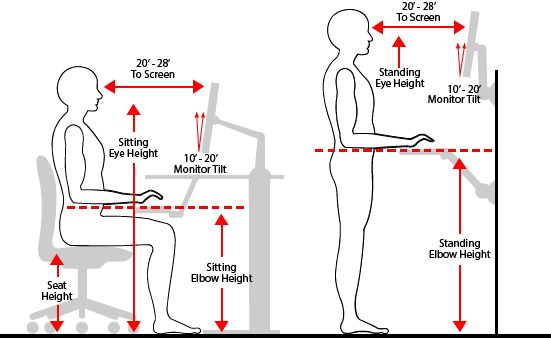The Science Behind Ergonomics: An Office Chair Or A Game Changer?
In the modern workplace, where long hours are spent sitting at desks, the importance of ergonomics cannot be overstated. Ergonomically designed office chairs are more than just comfortable seating options; they can be game-changers for productivity, health, and overall well-being. In this blog, we'll delve into the science behind ergonomics, exploring how the right office chair can make a significant difference in your work life.
Understanding Ergonomics:
Ergonomics is the science of designing products and environments to fit the needs of the people who use them. In the context of ergonomic office chairs, focuses on creating seating solutions that support the natural posture of the body, reduce strain on muscles and joints, and promote comfort and productivity.
The Impact of Poor Posture:
Poor posture is a common issue among office workers, often resulting from prolonged sitting in chairs that lack proper support. Over time, this can lead to a range of health problems, including back pain, neck pain, and musculoskeletal disorders. Additionally, poor posture can negatively impact concentration, focus, and overall productivity.
The Role of an Ergonomic Office Chair:
An ergonomic office chair is designed to address the shortcomings of traditional seating options by providing adjustable features and support mechanisms that promote healthy posture and comfort. Here are some key features to look for in an ergonomic chair:
- Lumbar Support: Proper lumbar support helps maintain the natural curve of the spine, reducing strain on the lower back muscles and preventing slouching.
- Adjustable Seat Height: The ability to adjust the height of the seat ensures that your feet are flat on the floor and your knees are at a 90-degree angle, promoting proper blood circulation and relieving pressure on the thighs.
- Adjustable Armrests: Adjustable armrests allow you to position your arms comfortably, reducing strain on the shoulders and upper body.
- Seat Depth Adjustment: Seat depth adjustment ensures that there is adequate support for your thighs while sitting, preventing pressure points and promoting circulation.
- Reclining Mechanism: A reclining mechanism allows you to lean back and relax while maintaining proper support for your spine. This can help reduce fatigue and prevent stiffness during long periods of sitting.
The Science Behind Comfort:
The design of ergonomic office chairs is informed by biomechanics, the study of the mechanics of the human body. By understanding how the body moves and functions, designers can create chairs that provide optimal support and comfort. Additionally, ergonomic chairs are often tested using pressure mapping technology to ensure that they distribute weight evenly and reduce pressure points.
The Benefits of Ergonomic Chairs:
Investing in an ergonomic office chair can yield a range of benefits for both employers and employees:
- Improved Health and Well-being: Properly designed ergonomic chairs can help reduce the risk of musculoskeletal disorders, back pain, and other common office-related injuries.
- Increased Productivity: By promoting comfort and reducing fatigue, ergonomic chairs can help employees stay focused and alert throughout the workday, leading to higher levels of productivity.
- Enhanced Comfort: Ergonomic chairs are designed with the user's comfort in mind, featuring adjustable features and supportive materials that adapt to the body's natural contours.
- Long-term Cost Savings: While ergonomic chairs may have a higher upfront cost, they can ultimately save businesses money by reducing absenteeism, turnover, and healthcare expenses associated with workplace injuries.
Conclusion
The science behind ergonomics demonstrates the significant impact that an office chair can have on comfort, health, and productivity. By investing in ergonomic seating solutions, businesses can create a more supportive and conducive work environment for their employees, leading to happier, healthier, and more productive teams.





Comments
Post a Comment